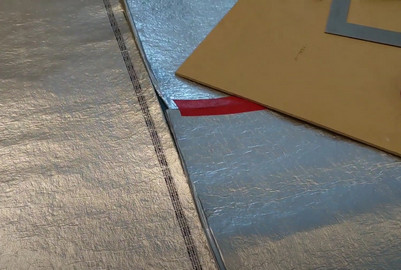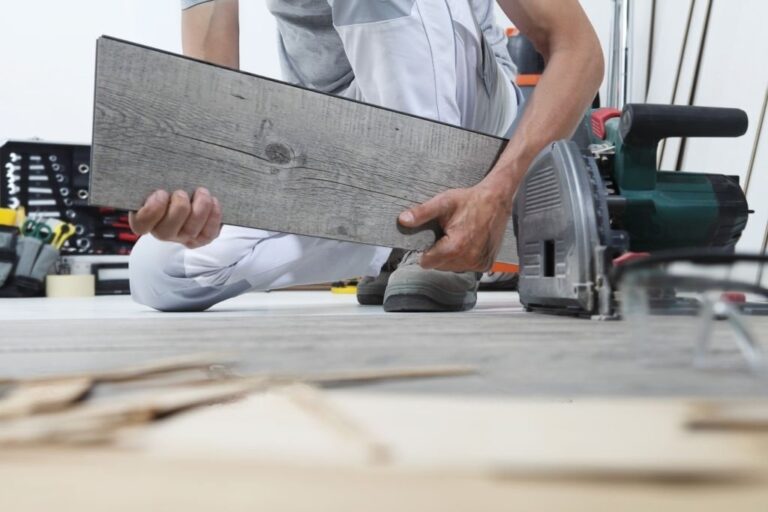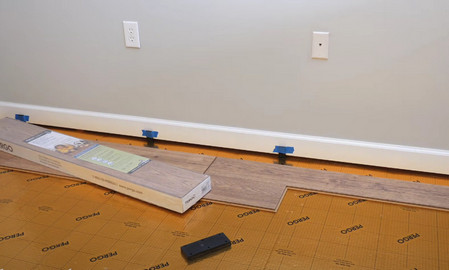Do you need underlay for laminate flooring?
Laminate flooring is a great option for homeowners who are looking to create a luxurious look that is unobtrusive. Laminate flooring is made from layers, and the layering can affect how the floor feels beneath your feet.

To get the most out of your laminate floor, you will need to install underlay underneath it-otherwise, it may have an awkward feel as there will be a gap between the subfloor and the laminate below. There are a few different options for installing underlayment suited to your needs.
Whether you think you need underlayment depends on the type of laminate flooring you are using. If your laminate has a ton of grooves or bumps that make it uncomfortable, underlayment is a must to prevent problems.
# Benefits of underlayment
Why do you need underlay for laminate flooring? It’s simple. The underlayment is what keeps your floor from moving and shifting. Flooring on its own can be very unpleasant to walk on without something to keep in place.
Without underlayment, laminate flooring is going to feel icy as it will shift and slide across the subflooring beneath it. Here are a few benefits of why laminate flooring needs underlay:
1. Floor stability
Just like with floors that are poorly installed, without something to stabilize your laminate, it is going to move. Subfloors move and shift as well, which can be even more uncomfortable than the flooring itself. Underlayment will bridge a gap between the floor and subfloor, making it, so they stay still as you walk on them.
2. Sound isolation
Underlayment will also keep noise from traveling from one room to another. If you have laminate flooring in your bedroom and the kids are running around above it, the noise will be hard to hear. Underlayment will create a barrier between the floors that will keep the noise from moving through.
3. Noise reduction
If you have laminate flooring in an area that is used frequently, you may want to consider underlayment for laminate. This isn’t just for sound isolation, but it also reduces the noise that is created when someone walks on the flooring.
4. Vapor barrier
Underlayment can be used as a vapor or moisture barrier to help keep moisture from causing mold growth. This is especially useful if you have moisture problems with your home.
# Different underlayment materials
You will most likely go with one of these materials for underlayment. All have their benefits and drawbacks. These are the most common materials you will find for underlayment:
- Polyethylene: This is a moderately expensive option. It’s manufactured to be heatproof, meaning it can withstand high temperatures. It also creates a cushion between the floor and subflooring. It’s durable and can be used on concrete. The downside is it costs a lot and may not hold up well to moisture.
- Poly vinyl chloride (PVC): This is a more inexpensive option. It is manufactured to have a high melting point, meaning it can withstand higher temperatures and can also be used on concrete. The downside is that it is not as durable as some of the other options. It also contains chemicals that may be harmful to your family.
- Rubber: This is a somewhat new addition to the underlayment. It has a much higher melting point than PVC. The downside of rubber is the possibility of it causing allergies or health problems for those with latex allergies. It also has a higher price.
# How to choose underlayment material for laminate floors?
The type of underlayment you choose will depend on your specific needs and the type of flooring you have installed. Here are the specific things to consider helping you choose the best underlayment material for your particular floor.
Room dimension
The type of underlayment you choose should be based on the size of the room and what is installed. For example, if you are installing laminate floors in a small space, it’s best to use a cheaper material. If you are installing laminate floors in a large space, it may be best to use an expensive underlayment.
If the space has large hallways, higher ceilings and is used for multiple purposes, you’ll want a more durable material. For example, if you are installing laminate floors in a large space, installing a rubberized underlayment may be best because it provides better traction for walking and helps to reduce noise.
Foot traffic
The amount of traffic in the space will also determine the material you should use. If you’re installing laminate floors in an area that is frequented by people, such as a kitchen, entryway, or living room, you may want to choose a material that provides better traction and noise reduction. If, on the other hand, you’re installing laminate floors in an area that is used less frequently, such as a bedroom or laundry room, you may want to choose a material that looks best rather than one that is designed for foot traffic.
Moisture problems
The moisture level in the room will also determine what material you should use. Water and moisture are two of the things that can damage laminate floors and create mold and mildew. If there are a lot of high moisture areas in the room, you may want to choose a material that is more durable and offers a moisture barrier.
Budget
The final thing to consider is your budget. The underlayment you choose will be based on your budget. If you’re willing to spend a lot on underlayment, then look into rubberized underlayment or even cork. If you’re on a budget, vinyl or polyethylene will do.
There are suggestions for underlayment materials for various laminate flooring projects:
- For $5 to 10 per square foot, consider vinyl, black polyethylene, or rubber.
- For $10 to 20 per square foot, consider vinyl or rubberized underlayment.
- For $20 to 30 per square foot, choose black polyethylene or vinyl.
- For $30 to 100 per square foot, choose cork or rubberized underlayment.
These are just suggestions, so you can get an idea of what to look for when choosing the best underlayment for laminate flooring.
# How to install underlay for laminate flooring?
- Measure the room to determine how many square feet of underlayment to purchase.
- Place the first sheet of underlayment down in the center of the room. Make sure it is centered right over the existing flooring and that there is an equal distance on all sides.
- Move on to the next sheet and repeat the process. Do this until you’ve covered the entire room.
- Once you have covered all of the edges, walk across it a few times to make sure it’s installed properly.
- Don’t forget to install a vapor barrier underneath your underlayment.
- Use a tarp or drop cloth to cover the floor while you wait for the adhesive to dry. It’s best to wait 24 hours before walking on the floor.
- Then, remove the tarp or drop cloth and walk across the floor and check for any wrinkles or bubbles. If you see any problems, take the tarp and re-lay it to cover these areas. Keep doing this until it’s smooth, and the floor is no longer wrinkled. If you can’t get it to lay flat with the first layer of underlayment, you may need to take up the entire floor and start over again.
When it comes to installation, you can hire a professional installer or go the DIY route using laminate flooring with pre-attached underlayment. This option is the best if you want to save costs. It requires no cutting or bonding; it will just snap on and adhere to your existing flooring. Simply cut to size and lay it on top of the existing flooring.
The laminate flooring with pre-attached underlayment costs around $1-$2 per square foot.
# Questions and answers on underlayment:
Q: What is the difference between the underlayment and gap-filling materials?
A: Gap-filling materials are used for floors that are frequently exposed to moisture, such as concrete slabs. They usually consist of a felt-type material saturated with asphalt and then coated with cork, stone, or ceramic chips which spread moisture throughout the material. Frequently, the top layer is tacky enough to keep light foot traffic from moving the cork or rock out of place.
Q: What are the advantages of rubber underlayment?
A: Rubber underlayment and flooring specialist installers are well aware that any surface which is more than a single-ply (single layer) requires reinforcement. There are two main reasons for this. Firstly, a single-ply can be easily damaged by scratching and scuffing, which reduces its lifespan. Secondly, it is far more difficult to install if there is no additional layer to hold it in place.
Q: What about underlayment for the home theater?
A: Underlayment is very important in a home theater. The movie studios recommend you use it in your home theater with your sound system. Underlayment is designed to prevent sound transmission. It keeps the sound from transferring from your floor to the walls and ceiling.
Q: What does underlayment do for wood flooring?
A: Underlayment will keep wood flooring from damaging and warping. It will also keep the floor from absorbing moisture as well as stopping moisture buildup. While there are many products on the market that claim to protect your wood flooring, underlayment is one of the best products for wood floors.
Q: What should I look for when deciding on underlayment?
A: When you are looking for underlayment for your laminate flooring, you should consider what is called the ‘IIC’ rating. This stands for sound insulation class. This rating will tell you just how much sound it can block. The higher the rating, the better it is at sound isolation. The best underlayment for laminate floors will have an IIC rating of 50+. This is the highest rating and will provide the best sound insulation.
Q: What is ‘Sound Attenuation’?
A: Sound attenuation refers to how much sound an object can absorb. It is measured through a standard called IIC. The higher the number, the better your product is at absorbing sound. Underlayment rated at 50 IIC or higher is considered the best quality.
Q: How much is underlayment?
A: Underlayment can vary in price, depending on the type of material it is made from, how much you need, and where you purchase it. On average, the cost ranges from $5-$10 per square foot.
Q: How much underlayment do you need?
A: To determine how much underlayment you need, simply multiply the length by the width of your floor area. For example, if your floor is 40 x 30 feet, you will need 100 square feet of underlayment. Keep in mind that this amount will vary with the type of material used for underlayment.
Q: What are the disadvantages of underlayment?
A: The disadvantage of underlayment is, if it is not properly installed, it can create uneven flooring. Since it is made with an adhesive, it will eventually fail. Make sure that you have a professional come in and install it correctly. If you do not keep up on maintenance, you may be left with uneven flooring.
Q: What are the disadvantages of cork underlayment?
A: The disadvantage of using cork underlayment is cost. Cork is a very pricey material and it does not typically offer the level of protection you would expect from an underlayment.
# Conclusion
Underlayment is very important for laminate flooring. It helps to reduce the noise coming from your floor to prevent sound transmission and protect against moisture. Considering the cost of underlayment, you must buy the best quality. Buying cheap underlayment can result in you having to replace it at a later date because it will not stand up to the wear and tear that your floor is subject to daily.
Underlayment materials are available at a variety of stores and online. Some companies also provide free installation of their products. Always look for a company that has a good reputation among their customers, including testimonials from past customers.

